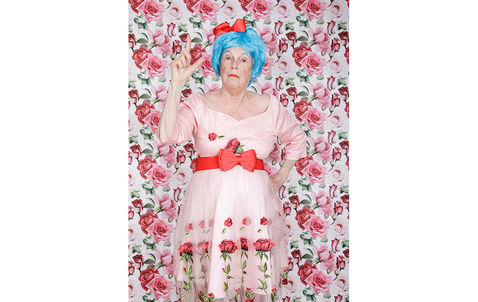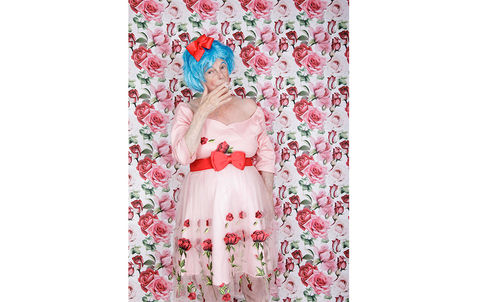top of page
Birthday Girl challenges the representation of Vicky Hodgson's girlhood femininity as seen in a photograph taken by her father in her garden when she was eight. This photograph shows her depicted as a 'nice' little girl as she is posing obediently in front of a bed of roses with her hands clasped in front of her body, wearing a party dress and a large bow in her hair. Birthday Girl presents a performance that rebels against this representation of femininity as Hodgson performs as an older woman with dyed blue hair and eyebrows. Wearing a rose embroidered dress against a background of rose patterned fabric, she enhances her recalcitrant performance by reluctantly wearing a bow in her hair and defiantly lights and smokes a cigarette.
bottom of page







